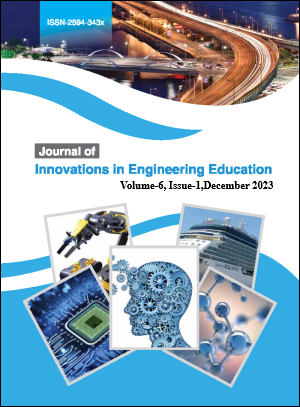Particle swarm optimization of star crash box
DOI:
https://doi.org/10.3126/jiee.v6i1.60057Keywords:
Crash box, Specific energy absorption,Crash simulation, Particle swarm optimization, Progressive buckling , Failure-modeAbstract
Crash box is energy-absorbing component to ensure the passive safety of vehicles during frontal crash. For crash-boxes - lightweight design, safety requirements absorbing energy are relevant. This research aims to determine the value of geometric design parameters in design space of star crash box optimizing specific energy absorption (SEA). The geometric modelling, meshing and finally input file for LS dyna is created using python scripting. Crash simulation is performed in LS Dyna. The energy absorption is taken from glstat of binout file and mass is taken from massout file. The particle swarm optimization is done using skopt python module. The geometric design parameters used are height (a), width (b), x-intrusion (u), y- intrusion (v) and thickness (t). For each simulation reference material Mild steel with density 7830 kg/m3, Young’s modulus 200 GPa and cowper-symond parameters c = 40s-1 and p = 5 is used. The impactor of 250 kg mass with speed of 15 mm/ms is used. After running simulations in batch mode, the maximum SEA of 63777.547 J/Kg is obtained at the values a = 72.291 mm, b = 75.314 mm, u = 20.162 mm, v = 4.978 mm and t = 0.985.
Downloads
Downloads
Published
How to Cite
Issue
Section
License
Copyright (c) 2023 JIEE and the authors

This work is licensed under a Creative Commons Attribution-NonCommercial-NoDerivatives 4.0 International License.
Upon acceptance of an article, the copyright for the published works remains in the JIEE, Thapathali Campus and the authors.

